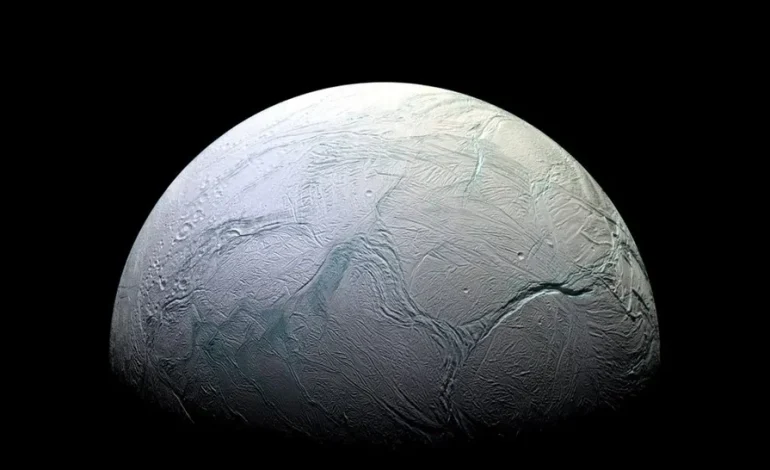Ice found in space may not be as structurally chaotic as once believed, according to new research published in Physical Review B by scientists from University College London (UCL) and the University of Cambridge, Space.com reports.
The findings challenge long-held assumptions that space ice is entirely amorphous — lacking any ordered molecular structure — and suggest that it can, in fact, be partly crystalline.
Water ice is prevalent throughout the universe, from interstellar dust grains to the surfaces of icy moons like Saturn’s Enceladus. Because of the extremely low temperatures in these environments — often below –148°F (–100°C) — scientists had long assumed that water vapor freezing in space would form amorphous ice, without the kind of ordered structure seen in Earth’s snowflakes.
However, the new study reveals that under certain conditions, up to 25% of this “amorphous” ice may actually contain tiny crystals just nanometers in size. These embedded crystals form during the freezing process and can occupy the otherwise disordered matrix of the ice.
“We now have a good idea of what the most common form of ice in the universe looks like at an atomic level,” said co-author Michael B. Davis. “This is important as ice plays a role in many cosmic processes, including planet formation, galaxy evolution, and material transport through space.”
Researchers arrived at these conclusions using computer simulations and X-ray diffraction analysis. The simulations showed that depending on how water freezes, small crystalline regions can form within amorphous ice. These findings were confirmed experimentally by analyzing real ice samples, where the X-ray scattering patterns matched the simulated results.
Low-density amorphous ice — the most prevalent form in the cosmos — was the focus of the study. It is typically produced by condensing water vapor onto ultra-cold surfaces. Interestingly, the research also shows that different formation methods of amorphous ice leave structural “memories,” influencing how the ice re-crystallizes later on.
Beyond advancing our understanding of ice physics, the discovery has practical implications.
“Ice could serve as a valuable material in space,” Davis said, noting its potential use in shielding spacecraft from radiation or as a source of hydrogen and oxygen for fuel.
The study may also inform theories about the origin of life on Earth. Some hypotheses suggest that life’s building blocks were delivered via icy dust grains. While the presence of crystalline structure in space ice could limit the availability of space within the ice to host organic molecules, amorphous regions may still provide the necessary shelter for these compounds.










The latest news in your social feeds
Subscribe to our social media platforms to stay tuned